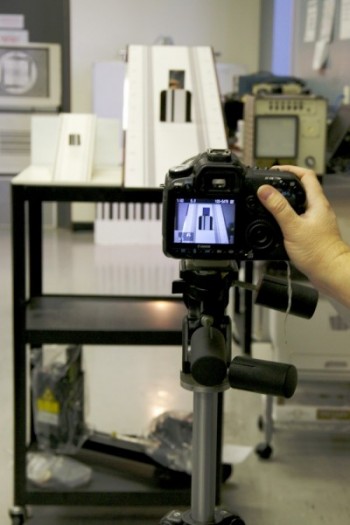
Camera defect or operator error? What’s the deal with these auto focus systems?
In the days of manual focus lenses, the photographer used his eye to focus the subject on the viewfinder matte screen. Then came focus aids imbedded in the center of that screen. There is the “micro prism” where the light off the subject would “shimmer” until focus was achieved. Then there is the “split image” which was great as long as there was something vertical in the subject matter along the desired focus distance. And then you could have the best of both worlds, the combination “micro prism/split image” screen. The split part is imbedded in the middle of the micro prism.
Today most, if not all, single lens reflex (SLR) and digital SLR’s have autofocus features that use autofocus lenses. These AF SLR’s use a CCD found on the bottom of the mirror box. The image is reflected down to this device through a secondary mirror found behind the primary mirror that reflects the image to the focus screen. This device electronically processes a small portion of the image (focus point) to drive a motor to focus the lens. Initially these camera bodies included one of these focus points in the center of the viewfinder which was quite adequate and accurate. However, if your subject focus point was in the center of your viewfinder and it did not have enough contrast for the CCD to process, then the focus system would have to hunt, causing the lens focus to move from end to end. You were forced to focus on something else, preferably at the same distance as the subject.
What focus point(s) do you choose?
Consequently the manufacturer designed a system with multiple focus points throughout the center area of the viewfinder. Some models you could select a wide area or spot. When the wide area is used, it is harder to determine exactly what the system is focusing on. But it finds something and occasionally the focus is not quite where you wanted it. Other models have a more elaborate multiple focus point system including eleven or more focus points: nine in a center square area and one on each outer side of the square area. The viewfinder shows where these points are using LED’s superimposed onto the screen. When the shutter release button is pressed half way to focus, the “optimum” focus point will illuminate on the viewfinder screen. This system nearly guarantees that the camera will find something to focus on. Great idea, however this tends to take a bit more time to find the “optimum” focus point and, again, it might focus on something too close or too far away from the intended subject. Fortunately, there are controls added that allow you to customize this feature and can be found either through a menu setting or a switch on the back of your camera. You can select center spot only or you can actually select an individual focus point position using the four way controller and the point will superimpose an LED on the viewfinder screen that will become your subject in focus. This works primarily if you are shooting many of the same images of your subject composed off center.
What’s the difference between single and continuous focus modes?
A couple of other focus features are Auto Focus Single (AF.S) and Auto Focus Continuous (AF.C). AF Single mode locks the focus, as long as the shutter release button is pressed half way while composing your shot. AF Continuous mode will adjust the focus continuously while the shutter release button is pressed half way to track moving objects. These settings are either found in the menu settings or as a switch on the side of the camera body.